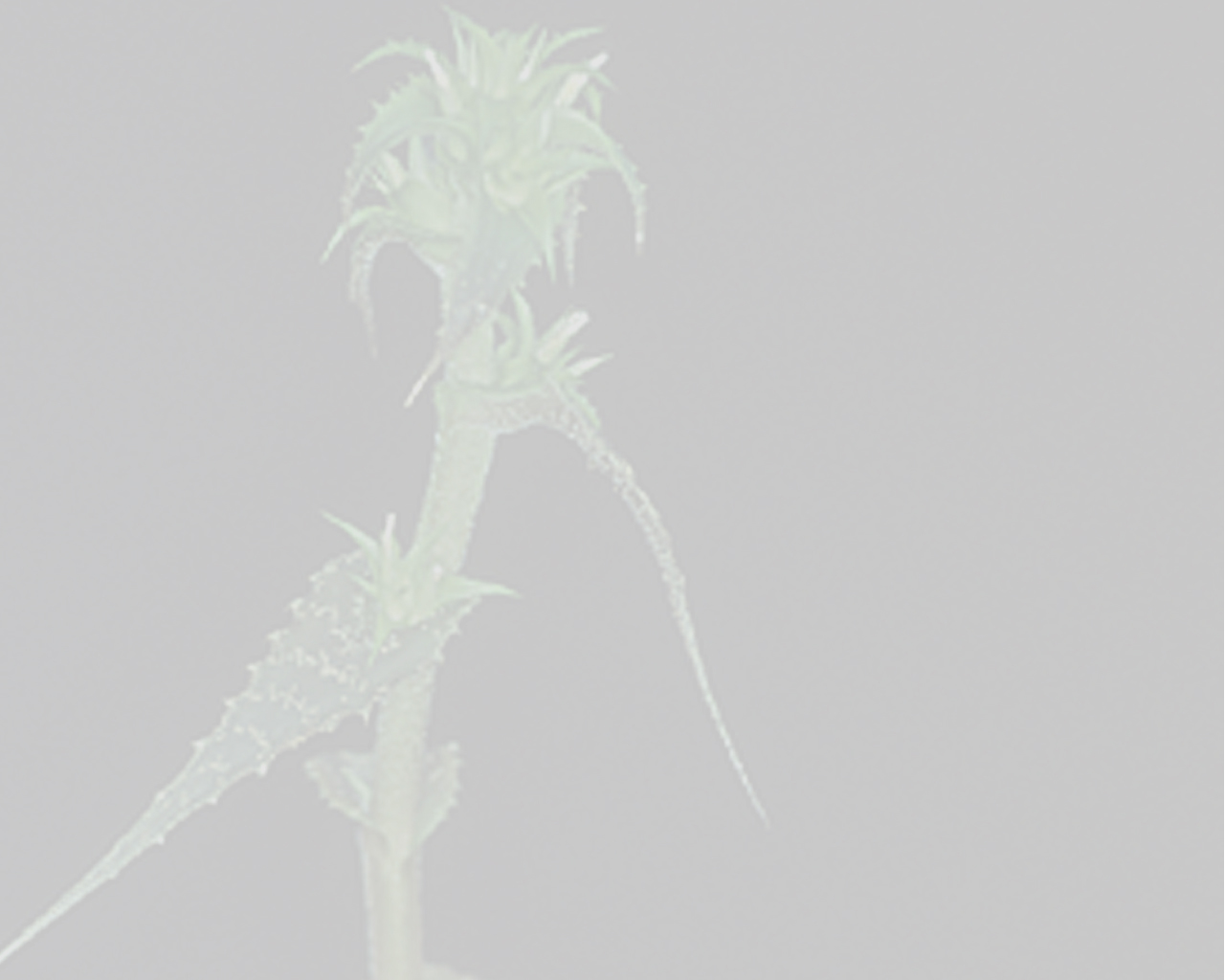

 Orthophytum supthutii E.Gross & Barthlott[as Orthophytum supthutii E. Gross & W. Barthlott emend. Leme & E. Gross.]
Orthophytum supthutii E.Gross & Barthlott[as Orthophytum supthutii E. Gross & W. Barthlott emend. Leme & E. Gross.]Observations: —For almost 40 years Cryptanthus duartei L.B. Smith has been the object of speculation and mystery since it is the only species of the genus with orange-colored petals. Collected originally in 1949 in the Serra do Cipo, Minas Gerais State, by Apparicio P Duarte, the species was presented to science in 1955 being named after its discoverer. This bromeliad has never again been collected despite the intense botanical work that has been carried out in the area where it was found, today a national park.
As a mandatory step in the work of revising the Cryptanthus genus, we had the opportunity of examining the isotype of C. duartei deposited in the herbarium of the Rio de Janeiro Botanical Garden. Although we were dealing with a dried specimen composed of fragments, it was possible to recognize the presence of two well-developed appendages at the base of its free petals, which characteristics were not observed in the original description. The fact is sufficiently relevant to alter the concept of the species, requiring a transfer to the genus Orthophytum.
When compared to species of the Orthophytum genus, Cryptanthus duartei was found to be similar to O. supthutii E. Gross & W. Barthlott, described in 1990, also collected in the Serra do Cipo, and also having orange-yellow petals. Although the original description of this species indicated some distinctions, we noted after re-examining the holotype deposited in the Herbarium Bradeanum that such differences were simply the result of faulty interpretation of identical morphological characteristics. We confirmed that observation by examining live specimens collected by the biologist Pedro I. Nahoum in the same microregion. For these reasons, we conclude that O. supthutii, which in 1990 had impressed us because of the never-before-seen color of its flowers, is not botanically different from Cryptanthus duartei.
Taking into consideration the impossibility of a new combination for Cryptanthus duartei since there is Orthophytum duartei, a distinct species also described by L.B. Smith, we must adopt the next available valid name for the species, as follows:Edited from (20-04-2023): Leme 1995g. A New Identity for a Mysterious Species .